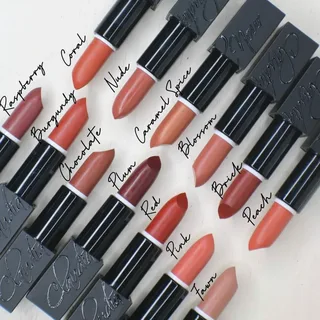In today’s beauty market, many consumers are not only seeking high-performance cosmetics but also products that align with their ethical and religious values. For Muslim consumers, halal-certified cosmetics are a growing priority, especially when it comes to everyday essentials like lipstick. But what makes a lipstick halal? A complete guide for conscious consumers is essential to understanding what to look for and why it matters.
Understanding Halal in Cosmetics
The term halal means “permissible” in Arabic and refers to anything that is allowed under Islamic law. While often associated with food, halal certification has expanded into other industries, including pharmaceuticals and cosmetics. For a product like lipstick to be considered halal, it must be free from any ingredients that are haram (forbidden), such as:
- Pig-derived ingredients, such as carmine or gelatin
- Alcohol, especially ethanol or denatured alcohol
- Ingredients derived from non-halal animal sources
Additionally, halal-certified products must be manufactured, processed, and packaged in facilities that prevent cross-contamination with non-halal substances.
Common Ingredients That May Make Lipstick Non-Halal
Many traditional lipsticks contain ingredients that can render them non-halal. As a conscious consumer, look out for:
- Carmine: A red pigment derived from crushed cochineal insects
- Lanolin: Often sourced from sheep’s wool, which is only halal if sourced and processed according to Islamic guidelines
- Stearic Acid: Can be plant- or animal-derived; the source must be known to confirm if it’s halal
- Fragrance: May contain alcohol or animal-derived substances
Checking the label or opting for halal-certified products is the safest approach.
The Importance of Certification
If you’re wondering what makes a lipstick halal? A complete guide for conscious consumers must highlight the importance of certification. Reputable halal certifying bodies, such as the Islamic Food and Nutrition Council of America (IFANCA) or JAKIM in Malaysia, verify that every ingredient and production step complies with Islamic law. Look for a certified halal logo on the packaging to be sure.
Benefits of Choosing Halal Lipstick
Aside from religious observance, halal lipsticks often offer added benefits:
- Cruelty-free and ethical sourcing: Many halal brands also align with vegan and animal cruelty-free principles.
- Safe and clean beauty: Halal cosmetics usually avoid harsh chemicals, making them safer for sensitive skin.
- Transparency: Halal certification demands clear labeling and traceability, giving consumers peace of mind.
How to Shop for Halal Lipsticks
To find truly halal lipstick products, follow these tips:
- Check for certification: Don’t just rely on marketing claims—look for official halal certification.
- Read the ingredients: Be familiar with common haram ingredients and avoid them.
- Research brands: Many beauty brands now offer dedicated halal lines. Brands like Inika, Zahara, and Tuesday in Love are popular choices.
Conclusion
So, what makes a lipstick halal? A complete guide for conscious consumers shows that it’s not just about avoiding certain ingredients—it’s also about ensuring ethical production, proper certification, and alignment with personal values. As demand for halal cosmetics continues to grow, more options are becoming available for those who want beauty without compromise.

